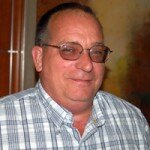The Comprehensive Stroke Center at the University of Cincinnati Gardner Neuroscience Institute is an international leader in the treatment and research of stroke, the fourth leading cause of death in the United States and a leading cause of long-term disability. The Center cares for more stroke patients than any other institution in the region, and it provides advanced specialty care for patients with the most challenging disease scenarios.
In 2015, UC Medical Center was re-certified by the Joint Commission as an Advanced Comprehensive Stroke Center, a new level of certification reserved for institutions with specific abilities to receive and treat the most complex stroke cases. There is no higher stroke certification.
In 2016, UC Medical Center also received its third straight Get With The Guidelines®–Stroke Gold-Plus Quality Achievement Award for implementing specific quality improvement measures outlined by the American Heart Association/American Stroke Association for the treatment of stroke patients.

The Center provides both emergency and elective treatment for cerebrovascular conditions that include transient ischemic attack (TIA), ischemic stroke, brain aneurysms, arteriovenous malformations and moyamoya disease. Treatment is provided by the multidisciplinary UC Stroke Team, which reviews complex cases at collaborative rounds. The team includes neurologists, emergency physicians, interventional neuroradiologists, neurosurgeons, nurses and critical care specialists.
The Center serves as the national coordinating center for StrokeNET, a network of 25 regional stroke centers around the United States. The Center’s specialists played a leading role in the development and testing of the clot-busting drug tissue plasminogen activator, or tPA, the only FDA-approved treatment for stroke caused by a blood clot. They have coordinated the largest interventional stroke trial in the world and have led national treatment studies of intracerebral hemorrhage and genetic studies of intracerebral hemorrhage and aneurysms. Today the Center is leading the largest ongoing biracial population-based study of stroke in America.











 In treating a stroke, time is brain. Because treatment must be administered within 3 to 4 ½ hours to be eff ective, one of the first things a doctor or EMT must do is determine the moment when the stroke...
In treating a stroke, time is brain. Because treatment must be administered within 3 to 4 ½ hours to be eff ective, one of the first things a doctor or EMT must do is determine the moment when the stroke... 
